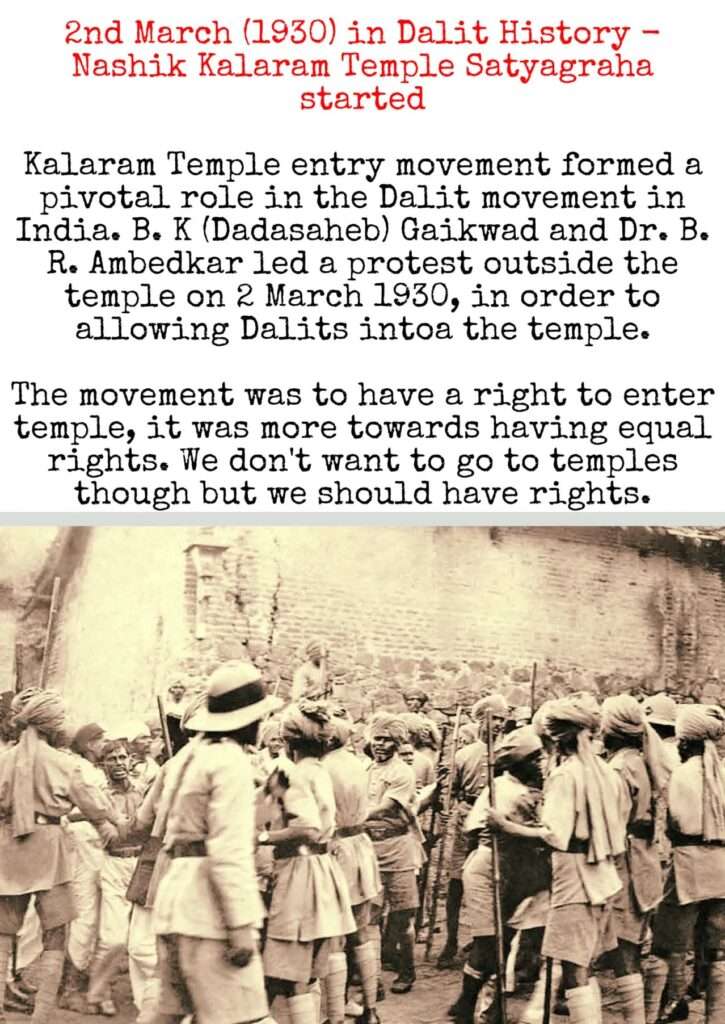Table of Contents
Kalaram Mandir in Nashik
The Kalaram temple in Nashik, Maharashtra, stands as a testament to the rich tapestry of history, religion, and social movements that have unfolded in its sacred precincts. Recently, Prime Minister Narendra Modi paid a visit to this revered temple on the banks of the Godavari in the Panchavati area of Nashik. The temple, with its unique features and historical significance, has attracted not only political leaders like Modi but also figures like Dr. B.R. Ambedkar, who led a landmark satyagraha at the site over 90 years ago. Let’s look into Nashik Kalaram Temple History in this article..
Nashik Kalaram Mandir History
Nashik Kalaram Temple History: Panchavati, where the temple is located, holds a special place in the Hindu epic, the Ramayana. This area, a part of the dense forest Dandakaranya, is where Lord Ram, along with Sita and Lakshman, spent the initial years of their 14-year exile. The name Panchavati is derived from the presence of five banyan trees in the region. According to the epic, Lord Ram, Sita, and Lakshman established a hut here due to the auspicious nature of the area, marked by these five banyan trees.

It was in Panchavati that the demon king Ravan abducted Sita, setting in motion the sequence of events leading to Ram’s journey southward to Lanka and the eventual Ramayana war. This historical and religious significance makes Panchavati, and the Kalaram temple within it, a place of pilgrimage for devotees and a focal point for various socio-political movements throughout history.
You can also read: Railway Electrification Update: Indian Railway Electrified 6577 KM Route In 2023!
Kalaram Mandir Satyagrah by Dr. Ambedkar
Nashik Kalaram Temple History: One such pivotal moment in the temple’s history occurred in 1930 when Dr. B.R. Ambedkar, a key architect of the Indian Constitution and a champion of Dalit rights, led a satyagraha demanding entry rights for Dalits into Hindu temples. On March 2, 1930, Ambedkar organized a large protest outside the Kalaram temple. Dalit protesters, arriving in trucks, surrounded the temple with a sit-in, singing songs and raising slogans, advocating for their right to enter the temple.

During the protest, an incident of stone-throwing ensued when Dalit protesters attempted to stop a Ram Navami procession from entering the temple premises. Dr. Ambedkar promptly intervened and diffused the situation, showcasing his leadership and commitment to the cause. This satyagraha at the Kalaram temple marked a significant chapter in the broader struggle for Dalit rights in India.
You can also read: GOREGAON MULUND LINK ROAD (GMLR): TRANSFORMATIVE ROAD PROJECT! READ ALL DETAILS HERE..
Nashik Kalaram Temple History: Kalaram Temple Movement Continued
The agitation at the Kalaram temple continued until 1935, reflecting the persistence and determination of those advocating for social justice. Dr. Ambedkar, who had earlier initiated a satyagraha in 1927 asserting Dalit rights to use water in public places, remained at the forefront of these movements. The historical resonance of the Kalaram temple as a site of resistance and assertion of Dalit rights adds layers of significance to its religious importance.
Kalaram Mandir: A Architectural Marvel
Built in 1792 with the efforts of Sardar Rangarao Odhekar, the temple itself is an architectural marvel. Its main sanctum boasts 14 steps, symbolizing the 14 years of Lord Ram’s exile, while the 84 pillars represent the cycle of 84 lakh species, according to Hindu belief, that one must traverse to be reborn as a human. The temple’s sanctity is further augmented by a very old tree, beneath which there are stone footprints believed to be those of Lord Dattatreya.
The Kalaram temple, named after the black-colored statues of Lord Ram, Sita, and Lakshman housed within, is a center of spiritual devotion for thousands of devotees who visit it daily. Sardar Odhekar’s vision of a black-colored statue of Lord Ram in the Godavari, and the subsequent recovery of these statues from the river, adds a mystical aura to the temple’s origin story.
You can also read: CAPTAIN MILLER TRAILER UNVEILS DHANUSH’S MULTIFACETED PERFORMANCE IN AN INTENSE PERIOD DRAMA!!
Kalaram Mandir Visits Recently
In recent times, political leaders like Prime Minister Modi and Uddhav Thackeray have made pilgrimages to the Kalaram temple. Thackeray, in particular, expressed his intention to spend January 22, the day of the consecration ceremony of the Ram temple in Ayodhya, at the Kalaram temple. He emphasized the historical struggle led by Babasaheb Ambedkar for Dalit entry rights at the temple, underscoring the idea that Lord Ram belongs to everyone.
Conclusion
In conclusion, the Kalaram temple in Nashik encapsulates a myriad of narratives – from its roots in the Ramayana and its architectural significance to being a symbol of resistance during Ambedkar’s satyagraha. Its ongoing relevance is evident in the visits by political leaders, highlighting its role not only as a religious site but also as a symbol of India’s diverse and dynamic history. The temple stands as a living testament to the confluence of spirituality, history, and social movements on the banks of the Godavari.

